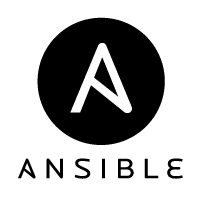Tag: Ubuntu
Our Ubuntu section has a variety of great tutorials that cover everything from securing your server to transferring an SSL!
Create a Cron Task in Ubuntu 16.04
Cron jobs are an incredibly useful Linux tool aimed at saving you time by scheduling tasks within your server. A programmed cron task will execute commands within a script by the minute, day, week or month. They can be scheduled to do many tasks including backing up your server’s files nightly, updating inventory orders in a database or even compressing files for migrating. Repetitive tasks become a cinch when incorporating a cron job. While there are numerous ways to run a cron task, we will be using the crontab option that is inherent within Ubuntu to set up a nightly backup of our website.
VNC (Virtual Network Computing) is a method for sharing a remote desktop environment. Allowing you to remote control another computer or server over the Internet or local network as if you were sitting in front of it. Keyboard and mouse strokes from your computer are relayed to the remote computer/server. There are many different kinds of VNC software available today. Several are cross-platform and add additional features, such as chat or file transfers. VNC is often used for remote technical support and remotely accessing files.
Transfer an SSL to Ubuntu 16.04 or CentOS 7
SSL certificates have become a de facto part of every website. If you don’t yet have an SSL on your site to encrypt data, you should. Rather than showing an extra layer of security on sites protected by SSL, modern browsers instead now display a warning when a website does not have an SSL, essentially requiring sites to maintain their positive image.
How to Use Ansible

Ansible is an easy-to-use automation software that can update a server, configure tasks, manage daily server functions and deploys jobs as needed on a schedule of your choosing. It is usually administered from a single location or control server and uses SSH to connect to the remote servers. Because it employs SSH to connect, it is very secure and, there is no software to install on the servers being managed. It can be run from your desktop, laptop or other platforms to assist with automating the tedious tasks which every server owner faces.
Configure NGINX to Read PHP on Ubuntu 16.04
What is NGINX?
NGINX is an open source Linux web server that accelerates content while using low resources. NGINX provides:
Often we want to edit our domain’s code, but on a production website, this can be dangerous. Making changes to the production site would not only allow all of the Internet to see unfinished changes but could also cause errors to display. As a workaround, we’ll create a testing domain or “dev” domain to work out any bugs and changes to the site.
Kubernetes 101: A How To Tutorial
What is Kubernetes?
The name Kubernetes has its origins from the original Greek term for helmsman or pilot. Kubernetes, or ‘k8s’ (pronounced “Kate’s”) as it’s sometimes referred to, is an open-source software tool that was originally created by Google and is now being maintained by the Cloud Native Computing Foundation. Kubernetes is used for arranging and coordinating containers that an application needs to run into easy to handle groups.
How To Install Docker on Ubuntu 16.04

Docker is an open-source software tool designed to automate and ease the process of creating, packaging, and deploying applications using an environment called a container. The use of Linux containers to deploy applications is called containerization. A Container allows us to package an application with all the parts needed to run an application (code, system tools, logs, libraries, configuration settings, and other dependencies) and sends it out as a single standalone package deployable via Ubuntu (in this case 16.04 LTS). Docker can be installed on other platforms as well. Currently, the Docker software is maintained by the Docker community and Docker Inc. Check out the official documentation to find more specifics on Docker. Docker Terms and Concepts.
Our previous article in this series focused on defining and fitting MPM to match your environment. Building from our last tutorial we will be discussing specific details on how to adjust the previously mentioned Apache configuration directives on the various types of Liquid Web VPS servers as well as Core managed servers.
Getting Started with Ubuntu 16.04 LTS
A few configuration changes are needed as part of the basic setup with a new Ubuntu 16.04 LTS server. This article will provide a comprehensive list of those basic configurations and help to improve the security and usability of your server while creating a solid foundation to build on.
Our Sales and Support teams are available 24 hours by phone or e-mail to assist.

